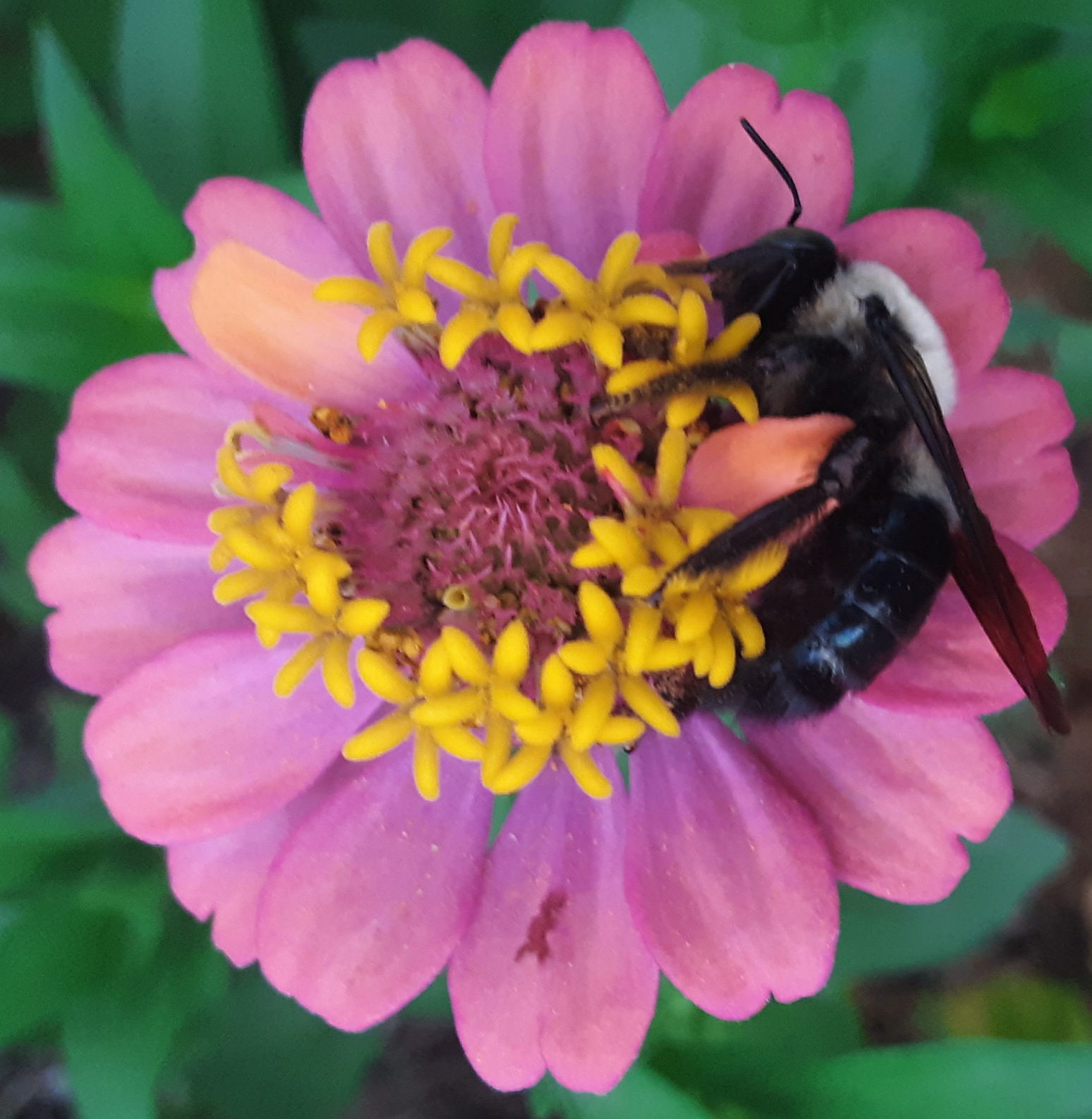PLANTING A BUTTERFLY GARDEN
Many years ago I edited a newsletter for the Master Gardeners in Virginia Beach called ‘Gleanings’. I often asked other gardeners for submissions, since not only was I new at assembling a newsletter, but also at growing things. Occasionally, generous people obliged, which is how I learned of an excellent idea for a birdbath. This led to playing good host, through creating pollinator gardens wherever I go.
This great easy how-to was simply a terra-cotta dish (the kind that usually goes under the plant’s pot) perched atop a tomato cage column. Underneath the column was planted vines (like four o’clock or similar annual) to cover the cage and make for a pretty attractive place for birds to perch and bathe.
I immediately implemented this idea, and soon enough the flowers were on their way, and the birds and butterflies seemed like they needed more.
So, we decided to install our first butterfly garden. There was a great team of women that had a company called “Plants with a Purpose” in the Master Gardeners, and their flyers inspired our choices. Their premise were that plants should enhance the landscape for wildlife first, then humans. Ultimately, a landscape of perennials that nourishes bees, birds, and butterflies will have a far greater effect than something chosen only for beauty. And with all the new visitors you’ll attract with a butterfly garden, you will enjoy unparalleled beauty beyond what you could have planned for.
And so…our new cheap-o birdbath was on itself an island of butterfly-attracting plants. Around the time we began planning the new plantings, my friend Melissa Pease was researching the same subject, on a much larger scale.
At the time, Melissa worked for the Elizabeth River Project, an awesome non-profit still in existence that works to restore the health of the Elizabeth River. In Portsmouth, Norfolk, Virginia Beach, and Chesapeake, Melissa’s assignment was to compile comprehensive lists of native and wildlife-enhancing trees, shrubs, perennials, and groundcovers.
The guide she created was underwritten by some of the Project’s biggest benefactors AND beneficiaries, and ALSO included stories on landowners along the river who’d planted wildlife habitats, reaping numerous benefits. Melissa even included plans for bird and bat houses, and we were happy to come celebrate the official book release.
I was privileged to have use of this fine book, and I USED it! We chose things like Butterfly Bush (Buddleia davidii), with its gorgeous arching purple wands, Butterfly Weeds (Ascelpias tuberosa) with its tie-dyed looking blooms, and Echinacea (pupurea) and Paw Paw (Asimina triloba), the latter two being excellent sources of food for swallowtail caterpillars and bearers of custard tasting fruit, respectively. Most importantly, we planted Milkweed.
At the time we were choosing our plants, the Monarch Butterfly, which I’d loved since doing a re-pot on them in the fourth grade, had suffered unprecedented losses due to a genetically-engineered strain of Zea mays (corn). In this case, the strain was also called “Roundup™Ready Corn.” The corn seed had bred-in resistance to the same-named herbicide, so it could be sprayed on fields and continue to live as everything else around it died. This made keeping the fields “clean” easy for everything, of course, but the butterflies. And the multitude of plants, animals, and insects that those formerly productive corn fields had previously supported. Included in this mass carnage was a vast percentage of the Monarchs.
Many of these majestic butterflies were killed off en route to their over-wintering grounds back in Mexico the year before we planted, and we wanted lots and lots of Milkweed to help rebuild their population.
While eco-activists across the country dressed as Monarch butterfly fairies while symbolically dumping Corn Flakes into trash cans, we practiced a more subtle but equally powerful form of activism (my favorite): planting seeds. By sowing Milkweed, we hoped for the best. Soon enough, different plants flowered and thrived and or butterfly bed gave us much joy for the remaining years we lived in that garden.
However, our Milkweed seeds never did bloom to attract their intended guests, unfortunately. This was the only detraction in an otherwise very successful garden; new residents included West Virginia sulfurs, Painted Ladies, Black Swallowtails, Tiger Swallowtails, and even Monarchs themselves.. just no Monarch caterpillars.
Fast Forward seven years (now twelve, Ed.) to our newly-planted butterfly garden in an albeit more arid situation. Once more, we planted Ascelpias, Buddleia (now considered to be an invasive species in the western part of the country as of July 2024)), Echinacea, even as Arrow wood Viburnum, Chrysanthemum, and umbelliferous plants such as yarrow, fennel, and tuberous flowers like Jerusalem Artichoke…nearby we put a tray of wet sand for “puddling” which is what insects with proboscis like to drink.
It was an exceptionally hot summer, and for the last half of the rainless season, a birdhouse gourd vine took over the entire front yard and came close to smothering the plants we’d lovingly placed to attract the butterflies. Nonetheless, I let the vine remain because it was helping to keep the ground shaded…an important job in 100-degree+ temperatures.
So in these inhospitable conditions, imagine my surprise when a few little milkweed plants just appeared and began to grow. And grow. And bloom!
Incredibly, in a year we least expected it, not only did we finally play host to the esteemed plant Milkweed, but Milkweed played host to many many Monarch caterpillars, and even grew to seed, hopefully securing a spot in the garden for more next year.
While our family won’t be able to celebrate Christmas in Mexico like we did in 2002, it gives me great pleasure to know that a former guest, against all odds, WILL celebrate there, against all odds. They are able to make it home thanks in part to our efforts, and that gives me something to be thankful for, many miles away with my family, here in Virginia.
